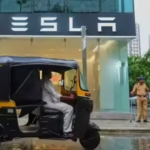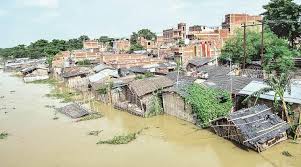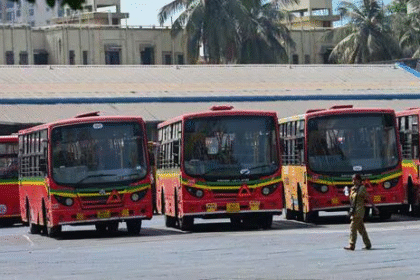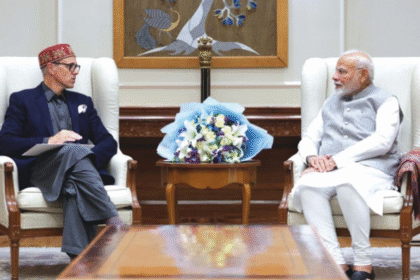CM Fadnavis Champions Urban Mobility Revolution: 305 Daily Metro Services Deployed on Lines 2A & 7 Amid Skyrocketing Commuter Demand
In a significant move aimed at addressing the surging commuter demand in Mumbai, Maharashtra Deputy Chief Minister Devendra Fadnavis on Sunday emphasized that it is the government’s “duty to stay ahead” of urban transportation needs. His remarks came in the wake of the introduction of 305 daily metro services on the much-utilized Mumbai Metro Lines 2A and 7 — a decision that marks a critical inflection point in the city’s public transit strategy.
The expansion of metro services is not just about easing congestion. It’s a strong message from the state government — that Mumbai’s lifeline must evolve to match the aspirations of its fast-growing population. “This is not just the launch of services, it is a promise to Mumbaikars that we are listening, and we are acting,” said Fadnavis during his address at the launch event held at Gundavali Metro Station.
The additional 305 services have increased the total frequency of trains on Metro Lines 2A (Dahisar East to DN Nagar) and Line 7 (Dahisar East to Gundavali via Western Express Highway), reducing waiting times, improving scheduling, and enhancing commuter comfort. This marks one of the largest scale-ups in metro operations since the Mumbai Metro network first became operational. The new services are expected to cater to over four lakh daily commuters, a figure likely to grow further as feeder networks and last-mile connectivity options improve.
Deputy CM Fadnavis underlined the urgency behind the decision, saying the city’s infrastructure must keep pace with its people. “When cities grow vertically and economically, their transport systems must grow horizontally and technologically,” he said. “We are not only expanding capacity, but we are expanding confidence — the confidence of every office-goer, every student, every Mumbaikar who depends on the metro.”
With Mumbai’s suburban railway system already operating at full capacity — ferrying over 7.5 million passengers daily — the metro network is becoming an indispensable support pillar. Unlike the suburban trains, the metro offers air-conditioned coaches, safety, punctuality, and a consistent travel experience, especially in monsoon months when local train schedules are frequently disrupted.
The Mumbai Metropolitan Region Development Authority (MMRDA), which oversees metro development in the region, confirmed that the added services were designed after extensive ridership pattern analysis, rush-hour mapping, and stakeholder feedback. Officials noted that earlier services on Lines 2A and 7 were often overwhelmed during peak hours, forcing commuters to wait or crowd into already-packed coaches.
These service additions are aimed squarely at solving that. With the frequency now as high as one train every 4–5 minutes during peak hours and every 7–8 minutes during off-peak slots, the system is expected to absorb growing demand for at least the next few years.
The political messaging embedded in this infrastructure upgrade is also clear. With elections approaching and urban voter expectations on the rise, the government is positioning itself as forward-thinking and citizen-focused. Fadnavis, known for his technocratic approach and urban policy expertise, framed the metro expansion not merely as a transport decision, but a civic duty. “Urban governance is about anticipation, not just reaction,” he said. “It is our duty to stay ahead, not fall behind.”
The upgrades also come with enhanced safety protocols and service optimizations. From upgraded ticketing systems to reinforced platform safety, the Mumbai Metro is seeking to benchmark itself against global standards. Further, authorities have confirmed that energy-efficient rakes, AI-assisted scheduling, and real-time digital monitoring will be integrated into operations to ensure sustainability and scalability.
Local citizens and regular commuters responded positively to the announcement. Many expressed optimism about shorter wait times and less congestion. Anushka Rao, a daily commuter from Borivali to Andheri, noted, “Earlier, I used to wait for 10 minutes or longer during the evening rush. If the trains are now every 4–5 minutes, it changes my schedule completely.”
Others praised the government’s responsiveness. “It’s a rare thing in Mumbai — that the government actually heard us and acted before it became a disaster,” said Prashant Korgaonkar, a college professor and daily metro user. “If this is what ‘staying ahead’ means, then I hope they keep doing it.”
The launch event also showcased digital dashboards, ridership forecasting models, and smart mobility solutions. With the state planning further expansion under the Mumbai Metro Master Plan — including Lines 5, 6, 9, and the much-anticipated Line 3 underground corridor — this increase in services may represent only the first of several forthcoming upgrades.
But the message was unmissable: in a city that never stops moving, the metro must never fall behind. And under Fadnavis’ leadership, Maharashtra appears intent on ensuring just that.
The introduction of 305 additional metro services on Lines 2A and 7 is only one part of a much broader transportation vision quietly being executed across Maharashtra. While the ceremonial flag-offs and political endorsements make headlines, the true transformation lies in the intricate behind-the-scenes work: master planning, multimodal integration, and ridership analytics.
Mumbai’s metro map is evolving rapidly. From a single operational line (Versova-Ghatkopar) a few years ago, the city now boasts multiple functioning corridors, with many more under construction. At the heart of this transformation is the Mumbai Metro Master Plan, an ambitious blueprint that envisions a 337-kilometer network by 2031 — rivalling the scale of metro systems in New York, London, or Shanghai.
Lines 2A and 7 — both inaugurated in phases between 2022 and 2023 — represent a crucial east-west and north-south link for western suburbs. Line 2A connects Dahisar East to DN Nagar, easing the pressure on SV Road and Link Road corridors. Meanwhile, Line 7 runs from Dahisar East to Gundavali (Andheri East), effectively complementing the Western Express Highway, which remains one of the city’s most congested arteries.
But transportation experts emphasize that building lines is only part of the puzzle. True efficiency lies in seamless integration — physically, operationally, and digitally — across different modes of public transport. The ongoing initiative to integrate metro lines with Mumbai’s iconic local train network, Brihanmumbai Electric Supply and Transport (BEST) buses, and upcoming sea transport corridors is a pivotal aspect of this strategy.
As of mid-2025, multi-modal transport hubs (MMTHs) are being actively developed or enhanced at stations like Goregaon, Andheri, Dahisar, and Kurla. These hubs are designed to allow passengers to switch from metro to suburban rail, bus services, or auto/taxi stands without stepping out of secure, designated transfer zones. In the coming years, QR code-based common mobility cards — valid across metro, rail, and buses — will enable a single-swipe commute throughout the city.
Deputy Chief Minister Devendra Fadnavis has repeatedly stressed the importance of integrating data-driven decisions into infrastructure policy. In his speech, he noted how metro service expansions were not based on arbitrary targets but on ridership heat maps and AI-based demand forecasts. These models factor in historical travel trends, population density, working hours, and even weather data to suggest optimal scheduling and route modifications.
A senior official from the Mumbai Metropolitan Region Development Authority (MMRDA) confirmed that ridership on Lines 2A and 7 had increased by over 48% since their inauguration. During morning and evening peak hours, load factors — which measure occupancy versus capacity — were consistently above 90%, especially at key junctions like D N Nagar, Andheri West, and Gundavali. The introduction of 305 new services is expected to redistribute this load more evenly, bringing down wait times and improving user experience.
Interestingly, commuter behaviour has also shifted post-metro. Surveys indicate that many office-goers who previously relied on cabs or two-wheelers for medium-range travel (5–10 km) are now opting for the metro, citing time savings, reliability, and air-conditioning as major draws. This modal shift has a larger urban benefit: reduced vehicular congestion and air pollution. According to preliminary data from the Maharashtra Pollution Control Board (MPCB), areas around metro corridors have seen a 4–7% drop in vehicular PM2.5 emissions over the past 12 months.
Fadnavis’s administration has further tied metro development with economic and social productivity. With every kilometre of metro rail translating into faster commutes, the city gains in working hours saved, retail footfall, and commercial accessibility. For instance, commercial real estate data suggests that properties within 500 metres of metro stations on Lines 2A and 7 have witnessed a 12–15% increase in rental value post-operations, making a strong case for transit-oriented development (TOD).
From a funding standpoint, the Mumbai Metro expansion remains a capital-intensive endeavour, backed by a combination of state government allocations, multilateral loans (such as JICA and ADB), and public-private partnerships. The Fadnavis-led cabinet has advocated for greater private sector participation in areas like station maintenance, real estate leasing, and advertising rights, creating a diversified revenue stream that can sustain long-term operations.
Yet, even with rapid expansion, challenges persist. Land acquisition, inter-agency coordination, and cost escalations remain bottlenecks. Line 6 (Swami Samarth Nagar to Vikhroli), for example, has faced delays due to utility relocations and legal disputes. Similarly, the underground Line 3 (Colaba-Bandra-SEEPZ), Mumbai’s first subterranean corridor, has been mired in political, environmental, and financial controversy, despite its massive potential to decongest South Mumbai.
Nevertheless, public sentiment around the metro remains largely optimistic. A commuter from Kandarpada, Mehul Desai, sums it up: “Mumbai needed this ten years ago. But better late than never. If they keep adding trains, improving connections, and making tickets affordable, people will leave their cars behind.”
With new corridors on the anvil — such as Line 9 (Dahisar to Mira Bhayander), Line 5 (Thane-Bhiwandi-Kalyan), and extensions planned for Navi Mumbai — the future of mass mobility in the Mumbai Metropolitan Region appears poised for a generational leap.
The next part of this series will examine the civic and ecological impact of the metro boom: how elevated corridors, depot construction, and station infrastructure are reshaping Mumbai’s urban ecology, real estate, and public spaces.
As the Mumbai Metro network rapidly evolves into one of India’s largest urban transit systems, the infrastructural ambition is unmistakable. Elevated corridors crisscrossing arterial roads, station complexes rising above bustling neighborhoods, and construction cranes now form part of Mumbai’s daily visual landscape. But as the city charges ahead with a vision of high-speed mobility and integrated transport, it must also grapple with the ecological and civic consequences of this transformation.
Environmental concerns surrounding the Mumbai Metro are not new. As early as 2019, activists, environmentalists, and local residents began voicing their opposition to certain alignments and depot locations — the most prominent flashpoint being the proposed car shed at Aarey Colony, one of the city’s last remaining green lungs. While Metro Line 3 (the Colaba-Bandra-SEEPZ underground corridor) is being hailed as a marvel of engineering, the construction of its depot in Aarey had triggered a fierce battle between conservation and development.
Under the earlier Uddhav Thackeray-led administration, the Aarey depot project was stayed following widespread protests and a court-backed reassessment. However, with the return of the Fadnavis-Shinde government, the project was reinstated — a decision defended on grounds of cost, feasibility, and urban urgency. Deputy CM Devendra Fadnavis, while acknowledging the ecological sensitivities, emphasized that “modern cities require difficult choices, and we must find a way to balance green priorities with the mobility rights of millions.”
Despite the political and legal battles, work resumed — albeit with commitments to sustainable development norms. Authorities claimed that compensatory afforestation would be carried out at a ratio greater than 1:3, alongside pledges for solar power integration, rainwater harvesting, and biodiversity conservation zones within the depot complex. But critics remain wary. “No amount of tree planting elsewhere can replace a living forest ecosystem,” says Dhriti Nair, a Mumbai-based ecologist. “We must not confuse greenwashing with green development.”
Beyond Aarey, other metro projects have also led to disruption of wetlands, mangroves, and urban commons. In areas like Mira-Bhayander, Chembur, and Bhandup, station construction and viaduct piling have displaced informal settlements, narrowed footpaths, and temporarily blocked stormwater drains. While the Mumbai Metropolitan Region Development Authority (MMRDA) insists that all environmental clearances are in place and rehabilitation packages have been provided, ground reports indicate a more complex reality.
In Ghatkopar, for instance, a cluster of families living adjacent to a Metro Line 6 construction site have reported cracks in their walls, high dust levels, and waterlogging due to blocked channels. Similar grievances have surfaced from Kandivali East, where a 200-year-old banyan tree was felled despite protests from local schoolchildren and residents. “We are not against development,” says community leader Vasundhara Iyer. “But how do you define development if it comes at the cost of everything natural, walkable, or beautiful in your neighborhood?”
The civic transformation, however, is undeniable. Along the operational stretches of Lines 2A and 7, there has been a visible change in urban form — revamped footpaths, new LED lighting, traffic signal synchronization, improved signage, and cleaner public spaces. These are not merely side-effects; they are part of the metro corridor development package implemented under the “Complete Streets” philosophy, aimed at maximizing commuter experience beyond the station premises.
This also includes Transit-Oriented Development (TOD) initiatives, where land around metro stations is being reimagined for mixed-use development — retail, office, and residential — all within walkable distance. The idea is to reduce dependency on motor vehicles, foster walkability, and create vibrant urban nodes. For example, at D N Nagar and Gundavali, multiple real estate projects have sprouted in anticipation of increased footfall, reshaping real estate pricing, land use, and even neighborhood demographics.
However, this urban redevelopment raises concerns about gentrification and affordability. As metro corridors drive up land prices and attract commercial interest, long-time residents and tenants in older buildings fear being priced out. Local vendors, too, are feeling the squeeze. “We were asked to shift because a glass façade mall is coming up here near the metro,” says Prakash Shetty, who has run a newspaper stall near Andheri for 27 years. “They say it’s for development, but where do small people go?”
The government has responded by allocating spaces for hawkers near select stations, integrating designated vendor zones in the planning layouts, and initiating dialogue with local trade bodies. Still, these measures are yet to reach scale, and many displaced livelihoods remain unaccounted for.
Fadnavis has emphasized that metro expansion must be equitable and ecologically responsible, stating that “urban development can no longer be one-dimensional. We are not just laying tracks; we are laying down a new social contract for what a city must be — fast, fair, and forward-thinking.” His office has also directed MMRDA to conduct periodic environmental audits, publish displacement and resettlement data, and release quarterly sustainability reports for public review.
To some extent, the city’s response to these transitions reflects a broader shift in public consciousness. Citizen groups are not merely protesting anymore — they’re proposing. In Malad, a local NGO has partnered with civic authorities to plant native tree species along metro station boundaries. In Bhandup, a group of architects has submitted a design for a biodiversity park under an elevated stretch. These collaborative interventions point to a maturing of urban citizenship — one that recognizes the complexity of city-making and seeks inclusion, not just opposition.
As the metro network continues to expand and embed itself deeper into Mumbai’s physical and cultural landscape, the question isn’t whether it will change the city — that much is inevitable. The more critical question is: will it change the city for the better, for everyone, and in time?
While the shining coaches, air-conditioned compartments, and sleek stations of the Mumbai Metro command public attention, the system’s real story is forged in the grit, sweat, and precision of thousands of workers who make the network run like clockwork. From civil engineers and control room technicians to daily wage laborers and janitorial staff, the city’s rapidly expanding metro system is not only a feat of infrastructure — it is a triumph of human effort.
At the break of dawn, long before commuters line up at platform gates, Vikas Shelar, a 38-year-old track inspector on Line 7, has already begun his patrol. With a torch in one hand and a rail gauge meter in the other, he walks the tracks between Dahisar and Kandarpada stations, inspecting for fissures, anomalies, and track alignment issues. “It looks perfect from outside,” he says, “but every millimeter matters. A minor misalignment could mean a major disruption.”
Shelar is part of a team that carries out nightly maintenance — a high-risk, high-discipline job. Work begins after the last train halts and finishes before the first service rolls out the next morning. The margin for error is nonexistent. “People trust these trains to be safe and on time. We can’t afford even one mistake,” he adds, adjusting his helmet as an inspection vehicle approaches.
Inside the Operations Control Centre (OCC) at Gundavali, a different kind of vigilance unfolds. A wall of digital screens displays real-time visuals of every coach, platform, and junction across Lines 2A and 7. Here, station controller Preeti Gokhale, aged 29, monitors train movement, CCTV feeds, passenger alerts, and emergency reports. Her shift starts at 7 a.m. sharp and can stretch late on high-traffic days.
“This room is the metro’s brain,” she says. “We manage everything — from train scheduling and crowd control to emergency response and route diversions.” Gokhale, an electronics engineer by training, was among the first batch recruited during the Line 7 trial phase. “It’s not just a job,” she adds, “it’s a public responsibility.”
The Mumbai Metro Rail Corporation (MMRC) and MMRDA have taken deliberate steps to build a skilled, multi-tiered workforce that includes engineers, planners, signal technicians, electricians, platform assistants, security personnel, and drivers. Unlike traditional suburban rail, which depends on decades-old manual systems, the metro system operates on automated signaling, AI-based analytics, and centralized command, requiring staff to undergo extensive training before deployment.
But not all faces behind the metro wear formal uniforms. On construction sites across the city, hundreds of migrant laborers continue to work under unforgiving conditions — laying concrete, cutting steel, and erecting columns that will eventually support future corridors like Line 5 and Line 9. At a site near Vikhroli, 24-year-old Mohan Dey, who hails from Bihar, mixes cement under a tarp amid heavy rain. “We work six days a week, 12 hours a day,” he says. “There is no metro without this work. But few people see us.”
Dey’s concern is not unwarranted. While the finished product receives national attention, the working conditions of construction workers often remain unacknowledged. Many live in temporary shelters on-site, have minimal access to healthcare, and navigate the dangers of heavy machinery daily. Labor laws are applicable, and safety gear is distributed, but enforcement varies across contractors. MMRDA has reportedly begun efforts to standardize welfare audits, including surprise inspections and biometric attendance to curb wage fraud. Still, implementation gaps remain.
The human side of metro life is also reflected in station support staff, often unnoticed in their visibility. Take Kalpana Waghmare, a housekeeping supervisor at Andheri West station. Her team is responsible for cleaning platforms, restrooms, staircases, elevators, and concourses — six times a day. “People spill food, leave garbage, smear walls — but we make sure everything looks new,” she says. “Metro is not just about trains, it’s also about discipline and dignity.”
Equally essential is the security apparatus, largely staffed by trained guards and ex-servicemen. Deployed at entry points, baggage scanners, and surveillance units, they are trained not only in protocol but also in human sensitivity — managing rush-hour tempers, helping elderly passengers, handling emergencies. On weekends and festival days, they serve as frontline responders in what often becomes an unruly sea of commuters.
To maintain a well-oiled workforce, the Mumbai Metro system now runs in-house training academies, partners with Indian Institutes of Technology (IITs) and Polytechnic Institutes, and conducts refresher modules in collaboration with international metro operators from Japan, France, and Singapore. According to MMRC, over 3,000 metro personnel have been trained since 2021, with specialized batches for control systems, disaster management, and AI-assisted maintenance.
Fadnavis, in his public statements, has frequently acknowledged the efforts of these individuals. “Every rider who gets to work on time, every student who reaches class dry during monsoon — they owe it to the invisible army behind the metro,” he said during a recent press conference. “They don’t just build infrastructure — they carry the city on their backs.”
In many ways, the success of Mumbai Metro is a story not of concrete and steel, but of resilience, training, and silent service. It is a reminder that behind every efficient journey lies a web of invisible labor, working long before the first commuter boards and long after the last train halts.
Also Read : Mumbai Rains: IMD Issues Red Alert for Raigad & Thane, Orange Alert for Pune Amid Heavy Rainfall Forecast







